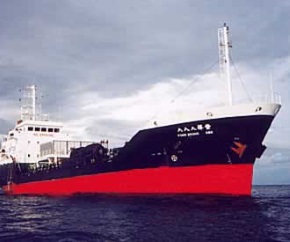Contango remains into play, this time for product tankers

Floating storage plays are always a factor in the tanker market, as it turns out. For much of 2015, talk of floating storage was dominated by speculation that the contango in crude futures might support crude floating storage. However, as shipbroker Gibson pointed out in its latest report, that “at the same time, much of the oil surplus was being absorbed by refiners chasing some of the best margins seen since the financial crisis, pushing much downstream into product stocks. It was therefore little surprise to see product stocks swell and floating products storage emerging in the latter stages of 2015, despite product contango structures not necessarily being supportive of a play”.
According to Gibson, “initially, clean floating storage was centered on Europe and the Mediterranean, as the US, Russia and the new Middle East refiners flooded Europe with middle distillates, whilst at the same time European refiners maximized runs. These factors pushed land based distillate stocks in ARA to record levels, forcing the need for floating storage. In recent weeks the diesel glut may have eased off marginally in the region, with the number of product tankers engaged in storage easing as higher inland demand and refinery maintenance draw down supplies. However, with seasonal maintenance starting to subside, and heavy inbound diesel flows from all directions, including a VLCC from Asia, this respite is likely to be short lived. Outside of Europe, a noticeable increase in product storage activity has picked up in recent weeks, with 4-5 LR2s sitting laden off Singapore as light distillate stocks are just below the record level of 15 million barrels. However, with peak Asian gasoline demand season approaching, such stocks may soon be drawn upon – if demand seasonality follows typical trends. Nevertheless, with increased interregional flows and ample supplies in the West waiting for the right economics to ship to the Far East, the region is set to remain well supplied for much of the year. However, longer term, pressure on global refining margins will prompt capacity reductions”, said the shipbroker.
Meanwhile, as Gibson points out, “many refining analysts expect margins to fall to lower levels over the course of the year, bringing back expectations that the familiar story of capacity reductions in ageing refining centers (Europe, Japan, Australia) will once again begin to play out, albeit a few years later than originally anticipated. However, to force this story, persistently weak margins will need to emerge, prompting run cuts and shuttered capacity by the weakest links. However, with gasoline cracks expected to outperform diesel, gasoline orientated refiners may be in a position to hold on longer than what might have been envisaged a few years ago. Yet until this story unfolds, floating products storage could remain a feature of the market, even if the absolute volumes are limited. In the short term, whether floating storage is positive or negative for the tanker market is debatable. On one hand it creates inefficiencies and delays, which constricts the supply of tonnage, supporting freight. However, on the other, it can limit trading opportunities, which has been evident in recent months. However, one or more catalysts could soon see this change”, it concluded.
Meanwhile, in a separate report this week, shipbroker Fearnleys commented on the state of the product tankers’ market by noting that “in the East of Suez markets, with continuously slow activity in the LR2 market in the Middle East, the market is now in its 4th consecutive week with softening rates. The last done fixture for MEG/Japan is still at ws82.5, but with USD 1.6 million done for MEG/UKC charterers will surely push for lower numbers on the MEG/Japan route as well. The position list will certainly allow it. The LR1 market has remained soft as well this week, as we currently assess MEG/Japan at around ws95 and USD 1.3 million for MEG/UKC. As for the MR market, activity has subsided somewhat since last week and for the time being it looks as though rates have flatted out”.
Similarly, in the West of Suez, “with London off on holiday on Monday, the week got off to a slow start, with hardly any activity in any of the different segments. And for the LR2 market, it seems as if the Brits never made it back to work as the market has been almost completely dead this week. The LR1 market remains quiet as well with only some activity on the UKC/West Africa trade. For both the LR1 and LR2 market rates remain under pressure whilst the owners await busier days… With delays and ullage-issues on the Continent, the MR market has managed to firm a few points since last week. UKC/USAC is currently trading at around ws122.5 and for the next couple of weeks the position list is relatively tight considering all the uncertain ships. After a few weeks now of firm rates close to ws200 for the x-MED Handy market, the air came out of the balloon as activity tried up before the weekend. Rates are down 50 points so far, but most likely, we have not seen the end yet”, concluded Fearnleys.
Nikos Roussanoglou, Hellenic Shipping News Worldwide
HEADLINES
- Do shipping markets want Biden or Trump for the win?
- All 18 crew safe after fire on Japanese-owned tanker off Singapore
- Singapore launching $44m co-investment initiative for maritime tech start-ups
- Cosco debuts Global Shipping Industry Chain Cooperation Initiative
- US warns of more shipping sanctions
- China continues seaport consolidation as Dalian offer goes unconditional